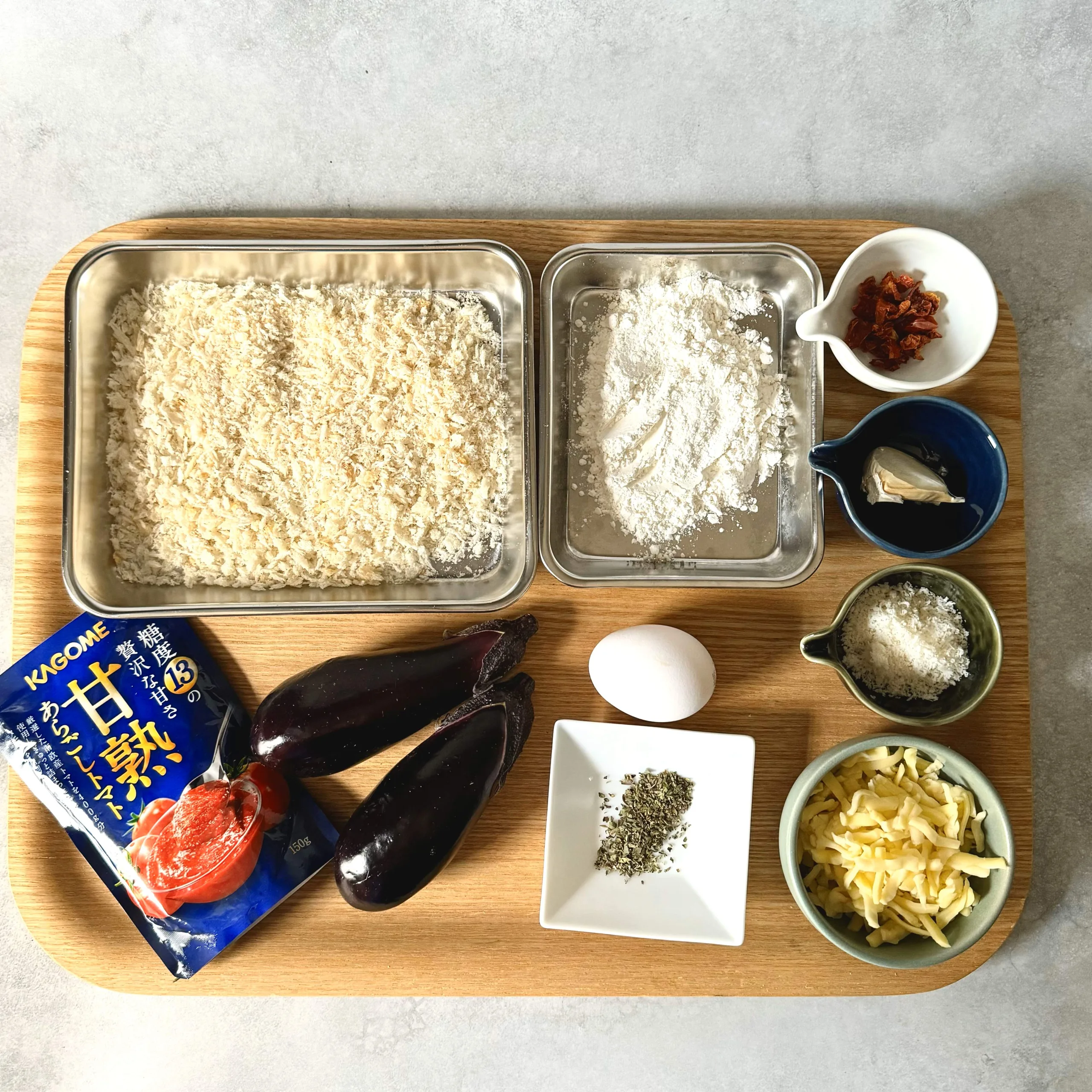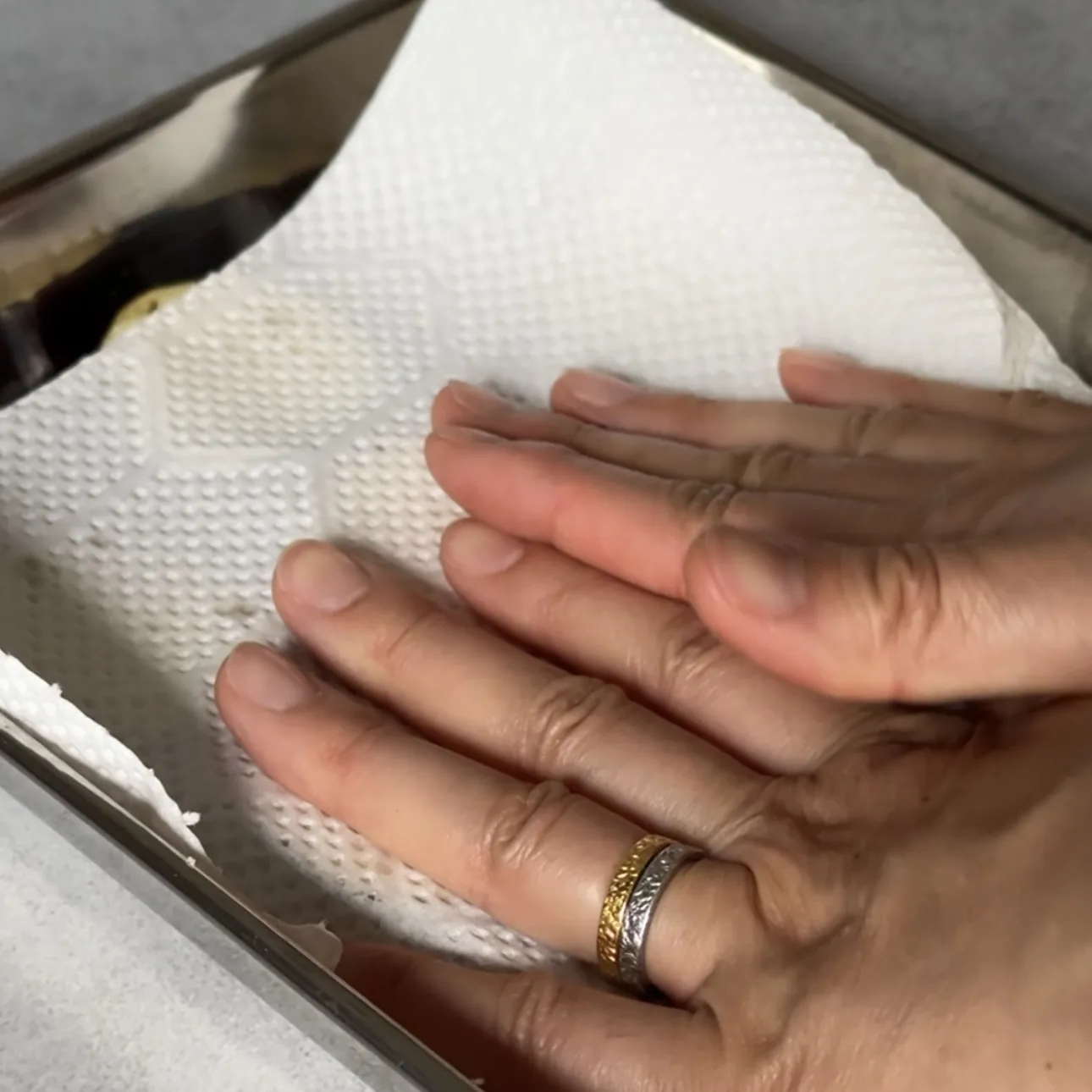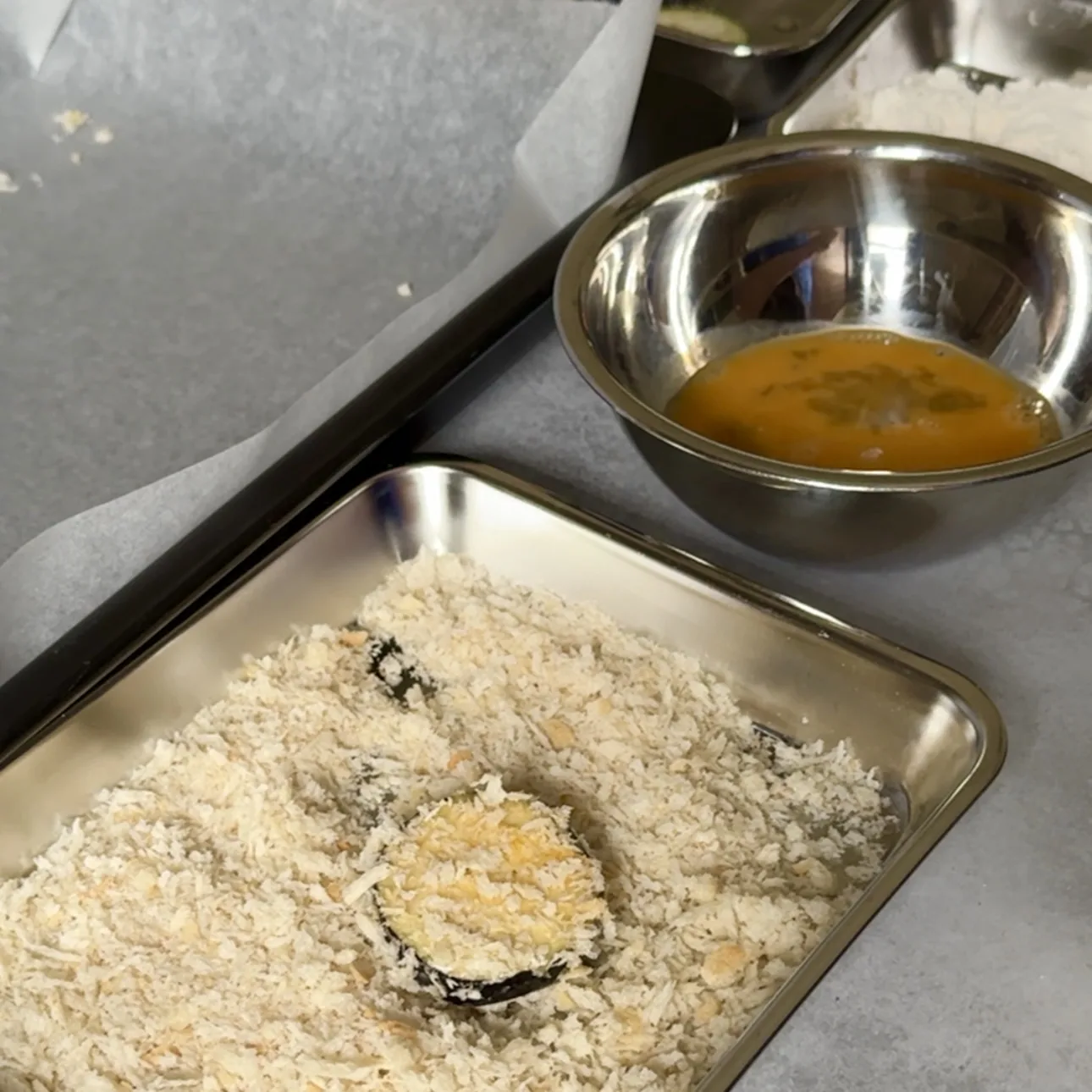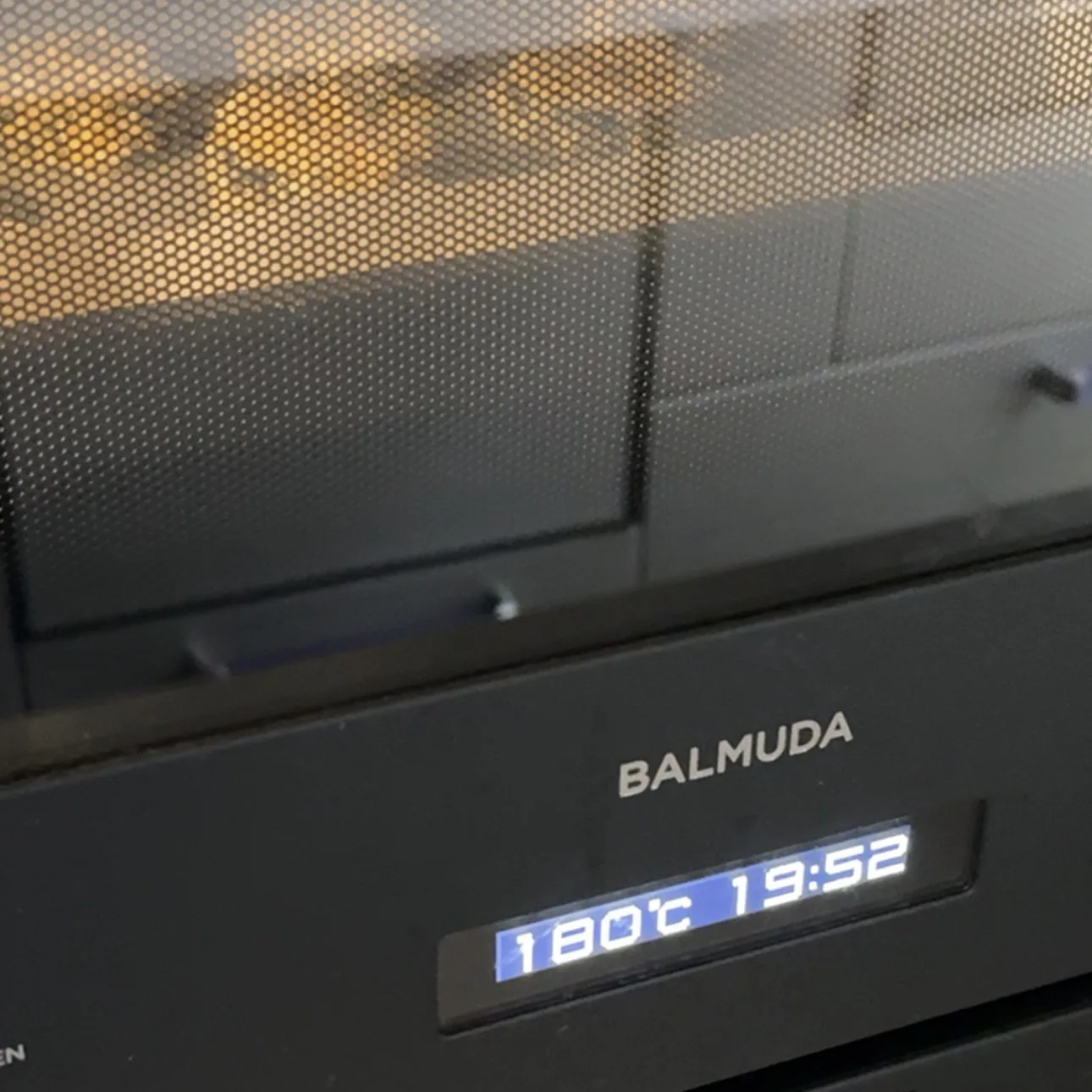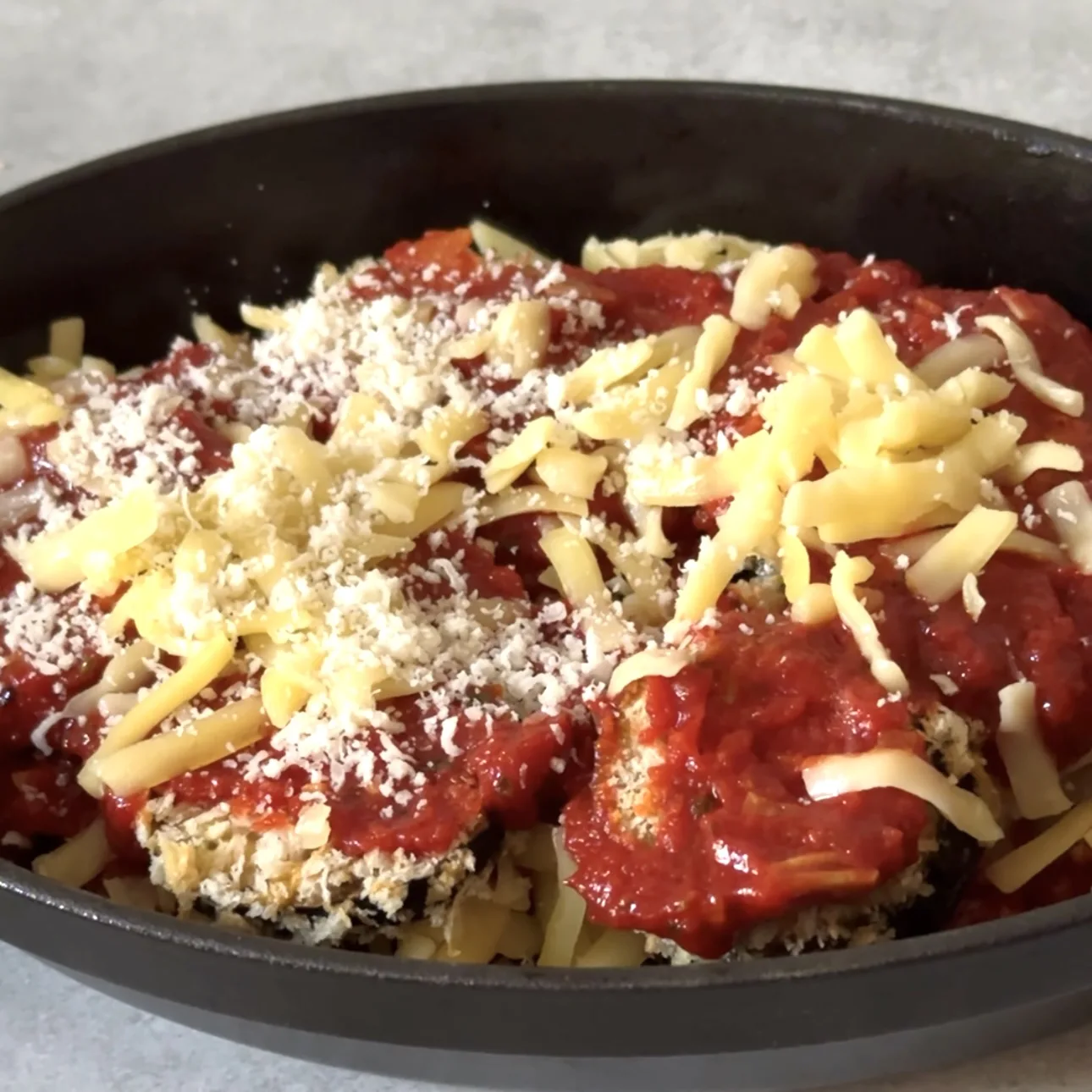Eggplants are a staple in Japanese cuisine and are commonly found in every household. Japanese eggplants are typically smaller and have a different flavor compared to larger varieties. As you might be able to tell from their size, Japanese eggplants are soft and contain a lot of moisture. Some eggplants are eaten without cooking, either pickled or simply raw with a bit of salt. Generally, they have thin, tender skin and few seeds. Their delicate flavor and slight sweetness make them enjoyable even when eaten raw. Japanese eggplants, with their soft flesh and quick cooking time, are used in various preparations such as grilling, boiling, and frying.
In this dish, I used Japanese eggplants to make Eggplant Parmesan, an Italian-origin dish. You might be surprised, but it pairs perfectly with sake. I recommend a slightly aged, rich sake for this dish.
While the choice of sake isn’t just for pairing, I also reflect my personal taste by leaving a bit of crunchy breadcrumb around the eggplant and using a thick, low-moisture tomato sauce. This way, you can enjoy both the rich, soaked flavors of the tomato sauce and cheese, and the crunchy texture alongside the eggplant’s savory taste, making it a dish with double the pleasure.
Is Eggplant Parmesan good with Sake?
I chose Eggplant Parmesan for pairing with sake because it is a very familiar dish that many households have made. When I lived in Canada, Little Italy neighborhood had an Italian takeout place where this dish was a staple. It’s also a familiar dish at home parties and family meals, like a comforting friend.
What I want to say is that you don’t need to prepare Japanese food just to pair it with sake. In Japanese restaurants in Japan, it’s common to have wine, champagne, and white or red wine with Yakitori, Japanese stews, and Sashimi. So, the opposite is also possible. Although this isn’t Japanese food, considering its simplicity and the way it highlights the ingredients, I’m confident it pairs well with sake.
In fact, when paired with a rich, aged sake, the combination is excellent. Especially with sake aged over the winter and released in spring, or Hiyaoroshi sake aged in the summer and released in autumn, the pairing is superb.
Daisekkei Junmai Ginjo Namazake Secchusodachi
This sake, aged in the snowy depths of Nagano, boasts a rich flavor that emerges from the maturation process, characteristic of raw sake. It has a fruity and rich aroma, and once it hits your mouth, a clean and refreshing taste spreads, leaving a lingering, rich umami finish.
This sake pairs well with slightly rich sauces like tomato sauce and goes perfectly with dairy products like cheese.
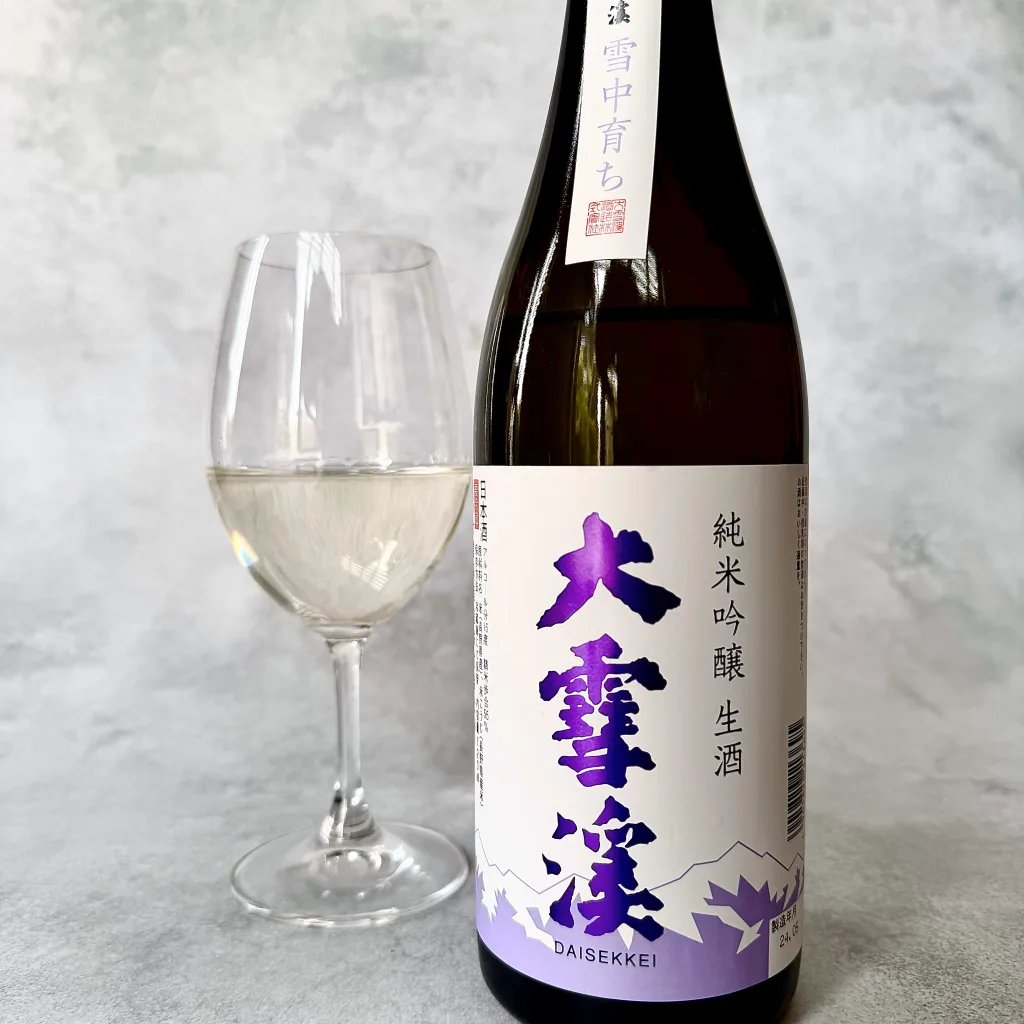

Eggplant Parmesan
Description
The key is thick tomato sauce. Recommended to use concentrated tomato paste.
Ingredients
Instructions
Prepare ingredients
The key is thick tomato sauce for this recipe. Try to use tomato paste, or cook tomato sauce until it becomes thick enough.
Prepare eggplants
Slice the eggplant into rounds and sprinkle salt over them. Let them sit for 10 minutes to draw out excess moisture. Remove the excess moisture with paper towels.
Coating the eggplant
Coat the eggplant in flour, then egg, and finally breadcrumbs, in that order, and arrange them on a baking sheet.
Baking the eggplant
Preheat the oven to 180°C and bake for about 20 minutes. It's done when the surface turns golden brown.
Preparation for tomato sauce
While the eggplant is baking, prepare the tomato sauce. Finely chop the garlic and heat it over low heat with olive oil. Add tomato paste, sun-dried tomatoes, and oregano, and simmer until thickened.
Layer the eggplant, tomato sauce, and Parmesan
In a heat-resistant dish, layer the eggplant, tomato sauce, shredded cheese, and Parmesan cheese in that order. Repeat to make a second layer.
Bake in a 220°C oven for about 20 minutes.

